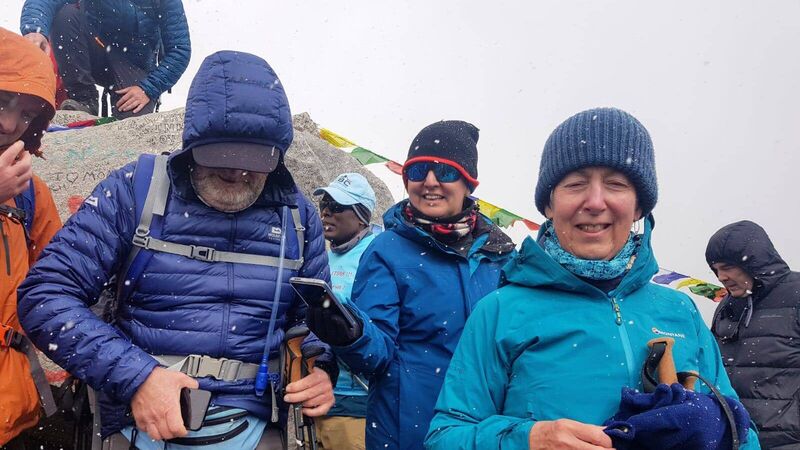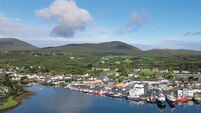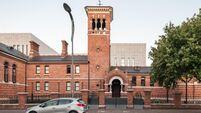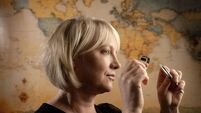'I felt very privileged': Cork climber’s joy at reaching Everest Base Camp

Corkwoman Catherine Griffin pictured at the Mt Everest Base Camp rock
An intrepid Skibbereen woman, who was inspired by Cork Mountaineer Pat Falvey, has spoken of the awe and joy she felt on reaching Mt Everest Base Camp.
Catherine Griffin is a barrister working on Cork’s Washington St who has always harboured a dream of climbing to Earth’s highest base camp in Nepal, at 5,364m. She previously summited Carrauntoohil and Mt Kilimanjaro.
Last September, that lifelong dream came true when Catherine jetted out to Kathmandu and Lukla airport to take on the gruelling trek to the roof of the world and back.
“I went on the expedition with Pat Falvey,” said Catherine. “He had three groups going out back-to-back, and we were the first.”
Poor weather hampered the return, with Catherine’s group having to double up and do two days’ walking in one, as the forecast was disimproving.
Amongst Mr Falvey’s groups were two women from Aherla village, west of Cork City, who managed to summit Island Peak, considered to be a more difficult climb than Everest base camp.
A group of Macra Na Feirme women from Killorglin enjoyed “stunning weather,” said Catherine.
“We trekked for seven days. The altitude means you have to go at it slowly.”
Walking up to six hours each day in high altitude, Catherine and her eight colleagues gradually acclimatised and coped with the conditions, along with Mr Falvey, and three Sherpas.
West Cork Independent county councillor Paul Hayes from Clonakilty, and his brother, were on the same trip fundraising for charity. “There was another man from Charleville, so Cork was well represented,” said Catherine.
“You have days where you are heading further and further up. There is a town called Namche Bazaar on the way up. The next day you do an acclimatisation trek, and you go up to this viewing point called Everest View. It’s still quite a distance, but that’s your first view of Everest and it’s quite incredible. That was very exciting for us as a group to see it.”
Wealthy tourists who can afford it are helicoptered up to this vantage point. “And there are people doing it on horseback as well. Their animals are used to the higher altitudes. There is a constant traffic up and down.”
Despite being an experienced hillwalker, Catherine was pushed out of her comfort zone by the dangerous bridge crossings. Swaying from side to side on rope bridges over deep crevasses, with animals coming against you, is not for the fainthearted.
After the first view of Everest, there are still a few further days to go before reaching base camp.
“As you’re getting closer and closer to it, the walking conditions become more barren, more rocky,” said Catherine.
Life for the native Nepalese is hard physical graft, with all supplies having to be flown or carried in and out by the Sherpas. There was great anticipation before the final day, and the stunning panorama exceeded all expectations. “The vista is only spectacular,” said Catherine.
“Just look all around at the mountains of the Himalayas. You ask yourself, ‘am I really here?’ It was so incredible, and awe inspiring.”
Trekkers have a short time to have their picture taken on a rock that says ‘Everest Base Camp’ before the next group.
“We were there 45 minutes to an hour. You do see people around you who are finding it really difficult and are sick. There is a move to get back out and make the descent.”
What struck Catherine were all those amazing men and women who climbed Everest in times past.
“And there are those who lost their lives. We were very aware of that. I felt very privileged to be there, that I could afford to go there.”
Catherine paid tribute to the three Sherpas and six porters who took care of them. Without their huge effort, her dream would never have been realised.







 App?
App?


